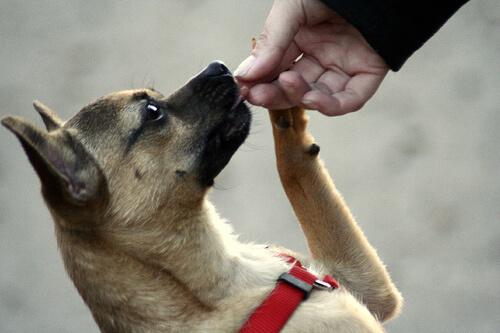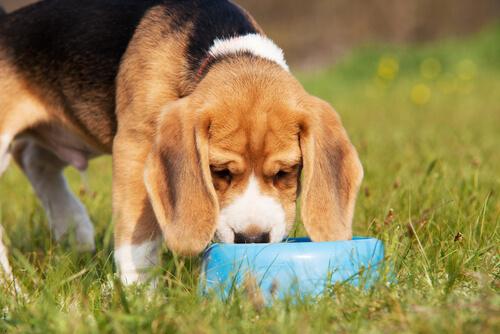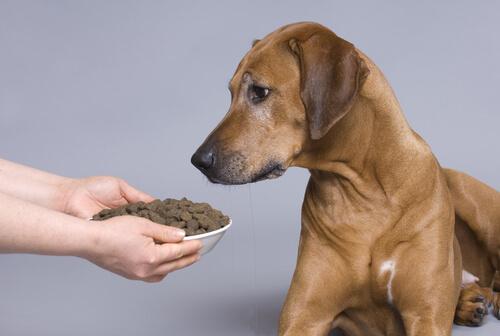Before and After Feeding: Some Tips

Providing your pet with a proper diet will help make them healthy, happy dogs. However, before you begin, you need to know what advice to follow before and after feeding. Of course, not all dogs are the same, but these standard tips can apply to all kinds of dogs.
Pre-feeding tips

If you’ve never had a dog before, and don’t know what to do, keep these tips in mind when it comes to caring for your pet and providing them with good nutrition:
- Don’t forget that your new friend needs liquids with their meal. It’s important that they never lack fresh, clean, water. Ideally, you should place it near their food.
- If your dog is a puppy — even if you’ve bought special puppy food — it might be hard for them to eat because their teeth are fragile. It’s important to help them eat by wetting the food with a bit of water until they get used to hard dog food.
- Although your pet’s food should be dry (dog chow), they can also eat wet food, which they´ll love. However, it should be a treat because they usually are not good for digestion when consumed in excessive amounts.
- Make sure you know the amounts your pet should eat. Normally the bag of food you buy will tell you, but it’s always good to consult with a veterinarian.
- Don’t let your little friend eat your food, or bones because they can greatly damage their digestive system.
- Make sure their food doesn’t change texture or color. If it has gone bad, it can cause your pet harm.
- Observe the way your pet eats. If they eat too fast, it’s better to give them small portions several times per day.
- An adult dog can eat every twelve hours, or twice a day. However, it’s different for a puppy, so be sure to ask your veterinarian.
- Give them their space. Let them eat, and don’t bother them. Do you like having your hair stroked while you’re eating?
Post-feeding tips
There are also tips for during and after feeding that you’ll find useful. Take a look below:
- If you have several dogs that eat from the same dish, make sure that their hierarchy principles don’t cause one dog to eat more than the others. This is important for the sake of everyone’s nutrition and development. If you think the dominant ones are leaving the weakest ones without any food, separate the portions and feed them one by one, so each one could get their fair share.
- Take them for frequent checkups, not just for deworming and vaccines, but also to check their weight and make sure they’re not eating more or less than they should.
- Don’t take your dog out to exercise until at least an hour has passed after eating because it might cause them problems digesting their food.
- If your dog doesn’t finish their food, don’t put it back in the original packaging, or store it where there are toxic products.
- Don’t allow other sick animals to share food from the same dish. Feed them in separate places.
- If needed, or you wish to do so, or the veterinarian has recommended that you change the food, don’t do it abruptly, but rather gradually. If you change their food all at once, your pet will probably go days without eating.
When should I change my dog’s food?

These changes are usually made when a puppy becomes an adult dog, or an adult becomes a senior dog. This change takes place due to the physiological changes in dogs.
Drastic food changes may cause allergies and other conditions in your pet, so it’s important to make sure you give them the right food. The best way to know which one is best is to ask your veterinarian.
Main image source: Art Siegel